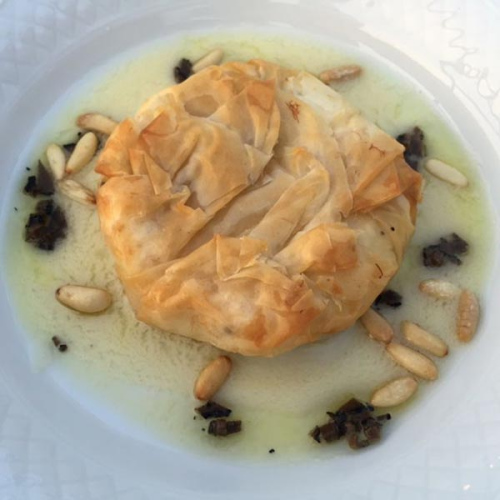
Creamed tuna in puff pastries. (Photo provided to China Daily)
But after taking one or two bites, they called the waiter back.
"Something is wrong," one said.
"The rice is raw," the others added almost in unison.
Marino D'Antonio, executive chef at Beijing's Opera Bombana restaurant, reacts with an understanding smile when I tell this story.
"When I first came to Beijing in 2010," he says, "I could almost never make it the proper Italian way-definitely firm or al dente. But now, the Chinese who will spend money in a fine restaurant are also more well-traveled. They understand the food better and like to eat it In the authentic style."
The Chinese staff at Bombana generally agrees-though they often ask the kitchen to make the dish "well-done" if they realize a new customer hasn't actually tried it before.
Risotto is a specialty of northern Italy, generally served as a first course. There are many variations with different types of rice, some retain their firmness better while others tend to absorb flavors better.
Generally, rice is first cooked briefly in onion and butter or olive oil to coat each grain in a film of fat, called tostatura; white or red wine is added and absorbed by the grains. When the remainder has evaporated, the heat is turned up to medium high, and very hot stock is gradually added while stirring gently, almost constantly. The stirring loosens the starch molecules from the rice grains, creating a smooth and creamy liquid. Then diced cold butter is vigorously stirred in to make the texture even creamier.
The most basic recipe includes rice, Parmesan cheese and parsley, but popular versions incorporate seafood, saffron, mushrooms and chicken. At the Gritti Palace in Venice, chef Daniele Turco has four different risottos on the current menu.
The rice in all of them is quite firm, he adds, unless a diner makes a special request.
If you go
Visit www.thegrittipalace.com or call +39-041-794-611.


















































